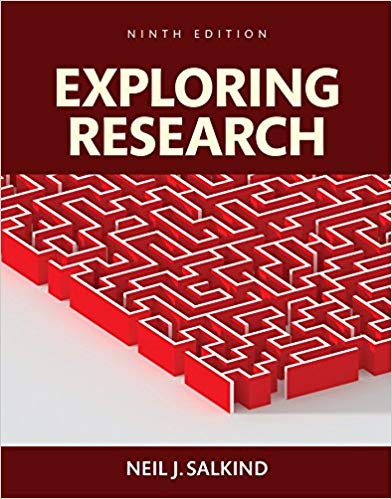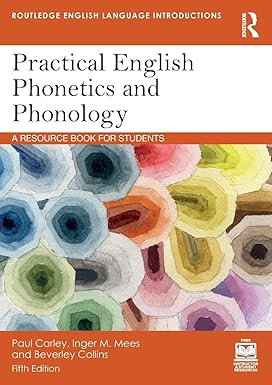For courses in Experimental Methods and in Research Methods in Political Science and Sociology
An informative and unintimidating look at the basics of research in the social and behavioral sciences
Exploring Research makes research methods accessible for students – describing how to collect and analyze data, and providing thorough instruction on how to prepare and write a research proposal and manuscript. Author Neil Salkind covers the research process, problem selection, sampling and generalizability, and the measurement process. He also incorporates the most common types of research models used in the social and behavioral sciences, including qualitative methods. The Ninth Edition explores the use of electronic sources (the Internet) as a means to enhance research skills, includes discussions about scientific methods, and places a strong emphasis on ethics.
NOTE: This ISBN is for a Pearson Books a la Carte edition: a convenient, three-hole-punched, loose-leaf text. In addition to the flexibility offered by this format, Books a la Carte editions offer students great value, as they cost significantly less than a bound textbook.
چکیده فارسی
برای دورههای روشهای تجربی و روشهای تحقیق در علوم سیاسی و جامعهشناسی
نگاهی آموزنده و بدون ترس به مبانی تحقیق در علوم اجتماعی و رفتاری
کاوش در تحقیقروشهای تحقیق را برای دانشآموزان در دسترس قرار میدهد - توصیف نحوه جمعآوری و تجزیه و تحلیل دادهها، و ارائه دستورالعملهای کامل در مورد نحوه تهیه و نوشتن یک پیشنهاد تحقیق و مقاله. نویسنده نیل سالکیند فرآیند تحقیق، انتخاب مسئله، نمونه گیری و قابلیت تعمیم و فرآیند اندازه گیری را پوشش می دهد. او همچنین متداولترین مدلهای پژوهشی مورد استفاده در علوم اجتماعی و رفتاری، از جمله روشهای کیفی را ترکیب میکند. ویرایش نهم استفاده از منابع الکترونیکی (اینترنت) را بهعنوان وسیلهای برای افزایش مهارتهای پژوهشی بررسی میکند، شامل بحثهایی درباره روشهای علمی میشود، و تاکید زیادی بر اخلاق دارد.
توجه: این ISBN برای نسخه a la Carte Books Pearson است: متنی راحت، دارای سه سوراخ و با برگ. علاوه بر انعطافپذیری ارائهشده توسط این قالب، نسخههای Books a la Carte ارزش زیادی به دانشآموزان ارائه میدهد، زیرا قیمت آنها بسیار کمتر از یک کتاب درسی صحافیشده است.
ادامه ...
بستن ...
Ebook details:
عنوان: Exploring Research, Books a la Carte (9th Edition) (9780134238418) Neil J. Salkind
نویسنده: Books
ناشر: English
زبان: 9780134238418
شابک: 978-0134238418, 0134238419
حجم: 7 Mb
فرمت: True Pdf
ادامه ...
بستن ...










